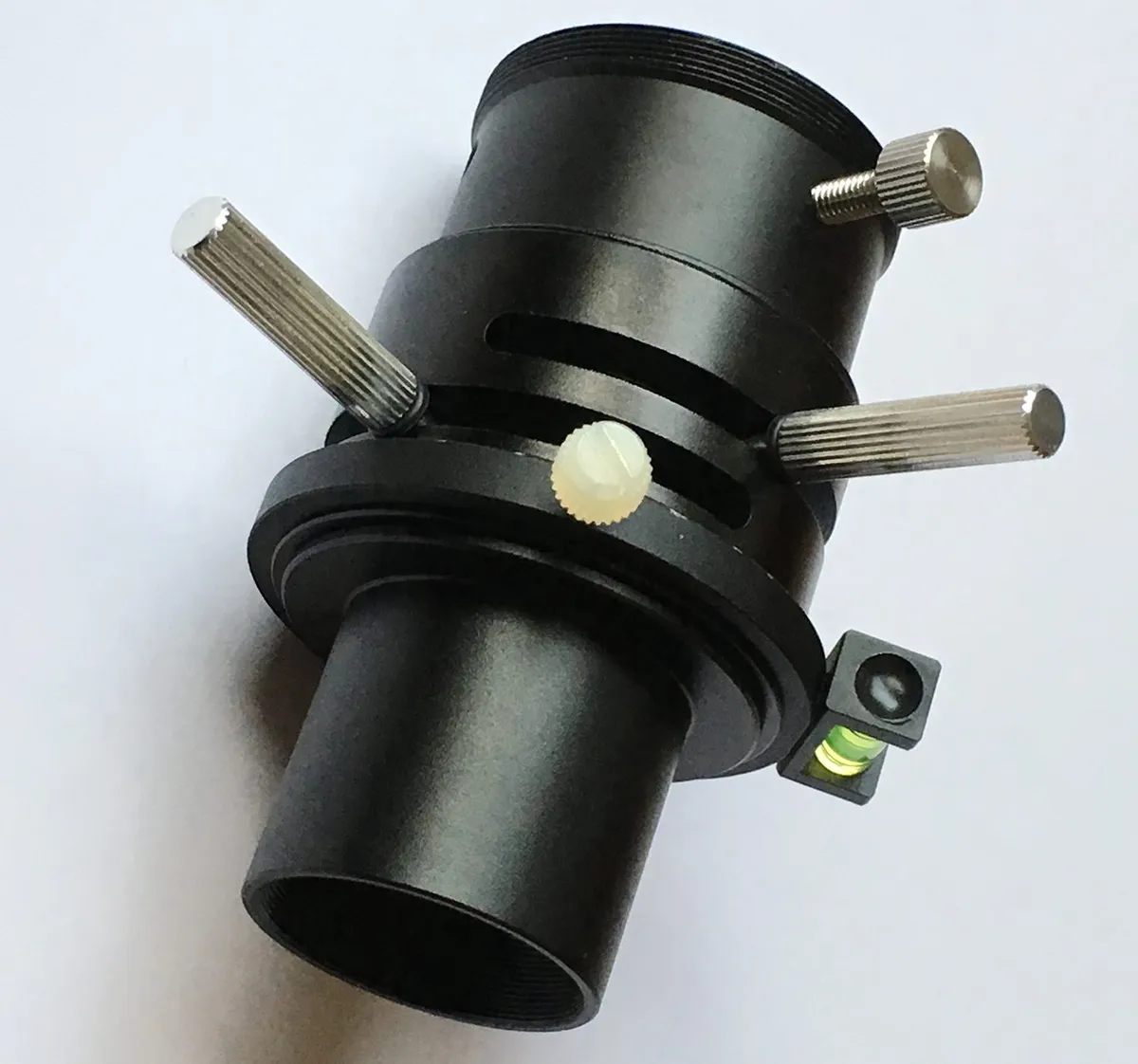Our atmosphere can act like a giant prism, elevating the image of an astronomical object by an amount related to the wavelength of the light and the object's altitude above the horizon.
This colour dependence of the elevation means that the light from stars and planets low in our skies gets vertically smeared - stars become tiny coloured spectra and planets are tinged with blue on the top and red on the bottom.
This phenomenon can dramatically affect your ability to see or image fine planetary detail, and with Jupiter and Saturn both languishing well south of the celestial equator for the next few years, both will be badly affected.
The good news is that a device is known as an Atmospheric Dispersion Corrector (ADC) can correct for this effect, and here we review one made in China by ZWO.

The unit consists of three sections- a 1.25-inch nosepiece that fits in your focuser or Barlow tail end, the main prism body, and a 1.25-inch female end into which you insert your eyepiece or imaging camera.
This end is also T2 male threaded as an alternative connection to your camera.
The main body contains two independently adjustable circular prisms made of anti-reflection coated H-K9L glass (equivalent to Schott BK7), each with a 2° deviation angle and with a quoted accuracy of 1/10-wave.
The prisms have a stated UV transmission at 350nm of 95 per cent, making the ADC suitable with UV imaging of structure in clouds of Venus.
Setting up the ADC involves first rotating the body until the mid-point of the two prism levers (the white knob) is horizontal, the ZWO ADC has a handy spirit-level incorporated into the body for this purpose.
Once locked in the level position, you adjust the two prism levers in opposite directions until the atmospheric dispersion is just cancelled out.
They should both be positioned equally either side of the mid-point and a handy graduated ring at the base helps keep things symmetric.
Learning to use it might be tricky to start with, especially for a Newtonian, but you will soon get the hang of things and ZWO provide a starter’s guide with further helpful links here.
It is worth noting that due to the length of the body of any ADC you will need to wind the focus in and you may run out of travel on some telescopes.
We tried the ZWO ADC on Saturn at only 16° altitude with a 222mm scope, placing it behind an APM 2.7x Barlow and using a ZWO224MC one-shot colour camera.

Colour cameras are more affected by atmospheric dispersion than are mono cameras using RGB colour filters, as their colour filters generally have much wider bandwidths.
With the levers set to ±3½ divisions we were able to cancel out quite severe atmospheric dispersion and make the most of the steady night.
The view through the eyepiece was significantly improved and the benefit for imaging is undeniable as shown in the accompanying figure.
Alignment of the red, green and blue channels in the processing software only gets you so far and ZWO ADC does the job well and is strongly recommended on planets low in the sky.
Vital stats
Price£124.00
Threads T2 Male and Female
Optics 2 Prisms
Material H-K9L (Schott BK7) with UV friendly AR Coating
Surface Accuracy λ/10@632.8nm
Weight 0.3kg
